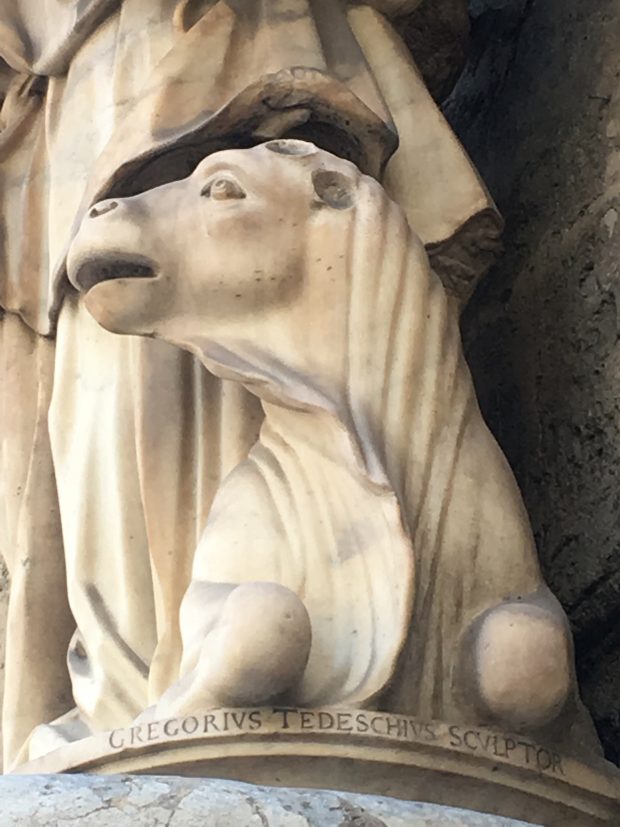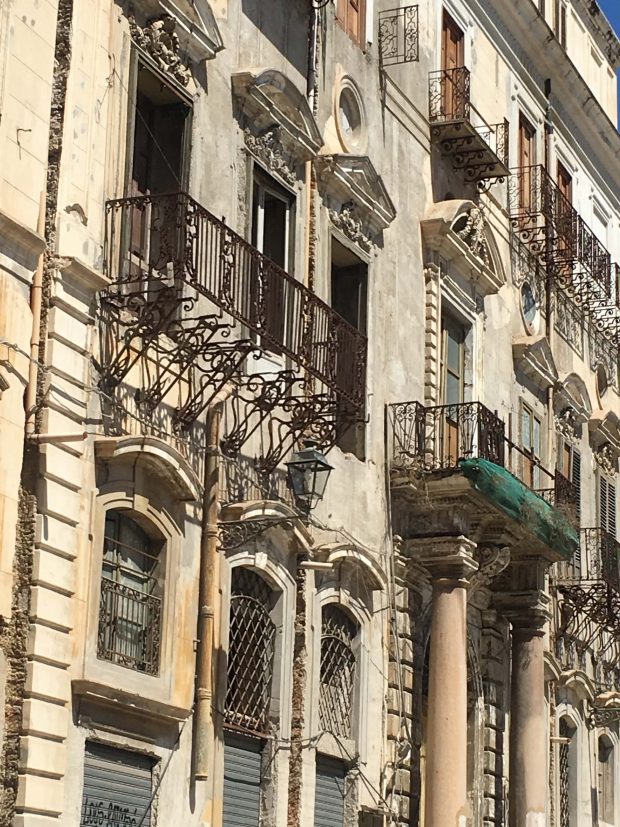Post (mortem) Cards #2: We Follow (Because) We Are Virgins
By Chloe Wilson
I’m not sure what drew me to read the one- and two-star reviews for Palermo’s Catacombe dei Cappuccini (Capuchin Catacombs). Perhaps it was their inherent potential for absurdity — there’s something so tenaciously churlish in taking the time and effort to write a scathing review of a centuries old burial site. How had so many people been unable to resist?
The reviews I read ranged from the practical (‘The times posted for admission were DEAD wrong [pun intended]’) to the frugal (‘No reduced price for kids’) to a slew of inexplicable comments which expressed visitors’ surprise and dismay that the catacombs contained dead bodies.
Among these reviews, however, there was one striking description: ‘Marco C.’ writes that ‘You will find rows upon rows of skeletons amassed like old rifles in an old mothballed army armoury.’
This image of an armoury is an apt one. It suggests the long, interconnecting corridors which comprise the catacombs, and the way in which the bodies are arranged standing tilted against the walls or stacked on shelves.
It also suggests how these bodies have attained a patina which from a distance renders them homogenous. Over time, they have all become a dulled grey-brown; coppery in places, dust-coloured in others, with the oxidised beige of bone poking through. This is due to the age of the corpses but also to their general state of disrepair; they are no longer maintained, and so it is not uncommon to see hay bursting forth from a chest or a leathery flap of skin sitting away from a skull[1].
The similarity between the preserved bodies is particularly apparent in the sections of the catacombs where friars are displayed. These were the original inhabitants of the catacombs (which were constructed by excavating crypts beneath the Palermo monastery once its cemetery had reached capacity). The oldest, Silvestro da Gubbio, died at the end of the 16th century, but he doesn’t stand out much from the others – even those who died centuries later. They are each displayed in their habits, and all, to a greater or lesser extent, show evidence of the Capuchins’ method of preservation.
This involved arranging the bodies in a ‘straining room’. They were placed on slats above deep pits and left for up to a year to drain of anything soft or liquid before eventually desiccating (‘like prosciutto’[2], writes A.A. Gill in National Geographic). They were then washed in vinegar, before each body was stuffed with straw and allowed to take its place along the corridors.
I wasn’t able to find any information about how it became vogueish to be mummified along with the Capuchin friars, but eventually that’s what happened. The wealthy started paying considerable sums to have their loved ones undergo the friars’ burial treatment. To have a body in the Capuchin crypt was considered prestigious. Families would visit loved ones who were housed there, and often supply costume changes to keep the mummies looking spruce.
Families also paid the monastery for upkeep; apparently, if payment was not forthcoming, a body was removed from its position and placed in a less illustrious spot — often a shelf stacked with other bodies — until the bill was settled.
Over time, this practice expanded to the extent that the catacombs became their own little society, with strict and signposted demarcations. People are grouped according to profession and social position. There are also rooms dedicated to children and infants.
Most visitors come to see Rosalia Lombardo, the ‘Sleeping Beauty’ of Sicily – a two-year-old who died of pneumonia in 1920 and was so well-preserved by embalmer Alfredo Salafia that some consider her miraculous[3].
But the room in the catacombs that I found most striking was that reserved for the virgins. It is one of the more sparsely populated rooms. Four women stand beneath a bare cross, a casket in front of them. They have been posed to look demure; each has her hands clasped. Further virgins are stacked on shelves against a side wall.
Above them, in solid black letters, are the following words:
…SEGUONO L’AGNELLO DOVUNQUE VADA,
SONO VERGINI
This translates to: ‘….We follow the lamb wherever he goes, we are virgins.’ The ‘because’ is implied.
Often when I write a poem, the desire to do so arises from a gap, a fissure that has opened up somewhere, revealing something puzzling or incongruous. Here, this gap appeared between the way in which those who preserved the bodies of these professed virgins — their families, the Capuchin friars — intended this display to be understood, and the way the tableau appears now.
That is to say: the scene no longer reads as a sincere celebration of chastity and piety. To quote Ella Morton, writing for Slate:
Many have wide-open mouths — due to a combination of decomposing facial ligaments and gravity — making them look as though they are screaming[4].
The quotation above them is of course not meant to suggest physical movement; it is presumably spiritually that the virgins ‘follow’. But it nevertheless creates an odd tension which both emphasises the virgins’ stasis and suggests the ways in which their lives were probably circumscribed while they were alive. The idea that ‘we follow…wherever he goes’ describes their lack of agency as much as anything else.
Yet, through the gradual process of disintegration, these corpses are beginning to challenge the words emblazoned above them. One hunches over, as if speaking to the woman next to her, who turns her head as if to listen. Another — in a manner inadvertently comic — stands with her bonnet pulled down over her face. As they slip out of the postures into which they were originally wired, the way in which the virgins’ bodies can be read will continue to change.
This is what I hoped to record in writing about the room of virgins — how, centuries after death, they have become unexpectedly dynamic. They resist, however unintentionally, and they move — however slowly — without following.
[1] Further to this, American GIs reportedly stole glass eyes from the bodies as souvenirs during WWII.
[2] Gill, A.A. “Where the Dead Don’t Sleep”. National Geographic Magazine. February 2009. http://ngm.nationalgeographic.com/print/2009/02/sicily-crypts/gill-text
[3] Until recently, it was believed that Salafia’s formula for embalming fluid died with him, but in recent years researchers have uncovered the recipe: formalin, zinc salt, alcohol, salicylic acid and glycerin. See Bommarito, Maria Lina. “Revealed: the Secret of Palermo’s Famous Mummy Child”. Times of Sicily. 8 February 2015. http://www.timesofsicily.com/revealed-secret-palermos-famous-mummy-child/
[4] Morton, Ella. “The Corpse-Lined Hallways of the Capuchin Monastery Catacombs”. Slate. 1 October 2014. http://www.slate.com/blogs/atlas_obscura/2014/10/01/the_catacombs_of_capuchin_monastery_in_palermo_sicily.html

